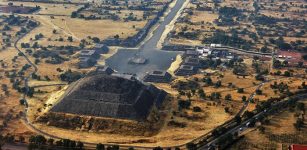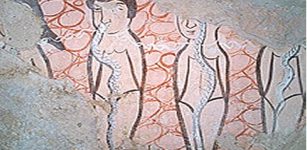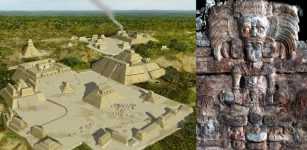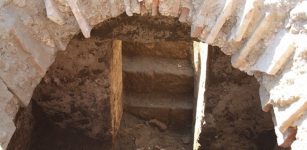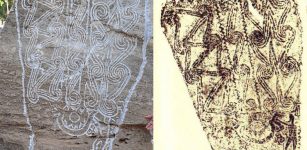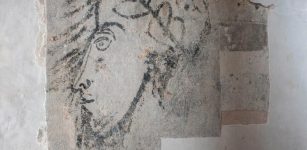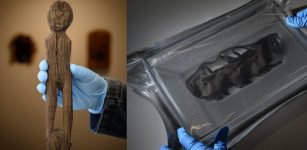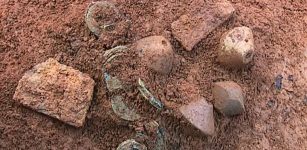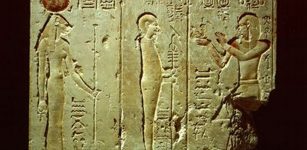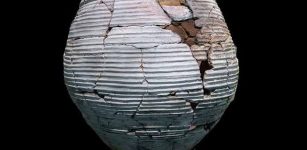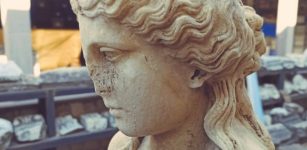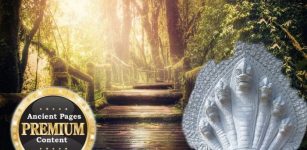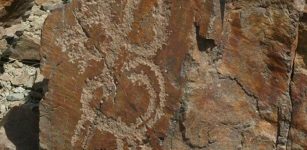4,500-Year-Old Sumerian Palace Discovered In The Ancient City Of Girsu
Conny Waters - AncientPages.com - The ancient Sumerian city of Girsu, located between the Tigris and Euphrates, was once part of the Lagash city-state and a political and religious center. Girsu had many temples devoted to Ningirsu, the chief god of Lagash, and it served as the capital during the reign of Gudea in the 22nd century B.C.
The Temple of Ningirsu excavation site in Tello, Iraq. Credit: British Museum / Getty
Tello is the modern Arabic name for the ancient Sumerian city of Girsu, one of the earliest known cities in the world. Girsu was explored in 1877 by Ernest de Sarzec and left abandoned for over a century until 2015. The recent discovery of a 4,500-year-old temple in the Mesopotamian city of Girsu demonstrates archaeologists should not give up on this ancient site.
The ancient ruins were unearthed by British and Iraqi archaeologists working for the Girsu Project. The Girsu Project, led by the British Museum, the State Board of Antiquities and Heritage of Iraq, and Getty is a joint initiative to save endangered heritage sites.
The archaeologist who led the discovery of the ancient lost palace in Girsu said peers accused him of 'making it up' and wasting funding.
The ancient ruins of the temple in the city of Girsu. Credit: PA
"I remember when I started in 2016, no-one believed me, I went to international conferences, and everyone basically told me.
Oh no you're making it up you're wasting your time you're wasting British museum UK government funding' - that's what they were telling me. I had other supporters and people who believed in this project and so we just persevered.
Of course, there was the research element and also the training, even if we had not discovered the temple it still would have been an amazing experience but the cherry on the cake was the temple," Dr. Sebastien Rey said.
Most scholars agree the ancient Sumerians were the earliest developed civilization in our recorded history. Mesopotamia is, therefore often characterized as the cradle of civilization.
The Sumerians invented writing, governance, and architecture, and they pioneered writing, schooling, organized religion, lawmaking, art, and literature. Piecing together the ancient history of this long-gone civilization has been possible because scientists discovered valuable information that sheds light on Sumerians' daily life.
“While our knowledge of the Sumerian world remains limited today, the work at Girsu and the discovery of the lost palace and temple hold enormous potential for our understanding of this important civilisation, shedding light on the past and informing the future," Dr Hartwig Fischer, director of the British Museum, told The Press Association.
Dr. Sebastien Rey also thinks the new discovery in Girsu may be the key to understanding a little more about this first civilization.
A tablet found at The Temple of Ningirsu excavation site in Tello, Iraq. Credit: PA
The ancient ruins of the temple were found at Tablet Hill, a site ravaged by 19th-century excavation and 20th-century conflict. The site has been left untouched for decades.
"Dr. Rey recalled the moment his team discovered the 'door socket' of the temple, which he described as the heart of the holy city, comparing it to the Vatican in Rome and Jerusalem in Israel," the Daily Mail reports.
He said: 'There was one moment when we knew we had something promising.
'We found a stone and the stone had an inscription ... when we read the inscription it was Gudea the King building a temple for god Ningirsu and then the name of the temple, so we knew without a doubt this was the temple.'
The temple, called Eninnu, was revered as one of the most important of Mesopotamia and was the main sanctuary of the Sumerian god Ningirsu in a sacred precinct called Urukug.
The archaeologist who led the discovery of a lost Sumerian temple in the ancient city of Girsu has said he was accused by disbelieving peers of 'making it up' and wasting funding. Credit: Girsu Project / British Museum
Dr. Rey said: "It's really huge. You take any manuals of archaeology students at university and you have a section on ancient Girsu and you read that nothing is left, the archaeology has been excavated away, basically, and that's what I was told when I was a student.
I always felt that that was a pessimistic view. If you had a set of new tools (and) technology, you can go back to those damaged 19th century excavations."
See also: More Archaeology News
He said it took his team eight seasons to fully uncover the temple, and at the end of the 2022 season they discovered the first mud walls of the palace in the ancient city, which he described as the 'tip of the iceberg'.
Dr. Rey said the team would move onto the palace area when they returned in early March.
Dr. Rey hopes he and his team will eventually locate the shrine of Gilgamesh, the legendary hero who was said to be the king of the Sumerian city of Uruk.
Written by Conny Waters - AncientPages.com Staff Writer





